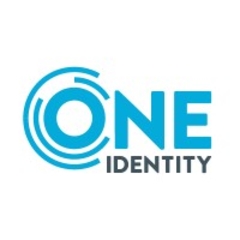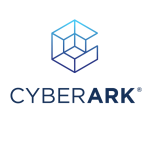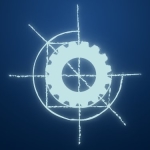What is our primary use case?
We have several use cases. I work with the German police, who use it to manage use cases. When the forensic examiner goes to the field to gather evidence, they have to transfer this evidence to investigators. We handle the entire process of data cleaning. When the forensic examiner goes to the field, an identity and governance process takes that data, creates an evidence file for it, and transfers that file to an investigator in that team. We also do email password provisioning.
We improve case processes for the bank we work with. They're also using One Identity for account management and provisioning. I'm working with an architecture firm onboarding new employees. There's a global assignment process where an identity or an employee can be assigned to a different country, and he still has to retain his employment. We map the identities even though he's given employment in another country.
How has it helped my organization?
The main benefit of One Identity is process management. Processes are easier to handle. With the police, if a forensic editor or examiner goes to the field and gets all the data, he would need to go to another office with his flash drive and all of those devices.
He has to call the investigator and tell them he's coming to their office. If the investigator isn't there, he cannot go in. When the guy has time, he will open the door. He goes in, plugs in the device, and waits for hours because they must upload terabytes of data. It takes a lot of time to transfer data because of the internal processes they use. We streamlined the process so the investigator could upload data from the field.
We also helped a client who had employees traveling to another country on a global assignment. If you must create a new identity for that user because he needs a new identity to work in that country, he can't because we always have to separate objects from different countries. We can manage one user in two different countries and create a sub-identity for that user.
One Identity Manager helps us minimize governance coverage gaps among test, dev, and production servers. One thing I love about it is the database transport tool. You can model data from the Dev environment and not necessarily push the data. You can model the processes, projects, scripts, business roles, etc., in the dev environment and move them to the testing environment. Once the testing is finished, you can move the transport file to production. It's powerful because you don't need to manually alter the data.
With business roles, you can close the gap between privileged users and standard users. You can assign business roles to people based on their position and Active Directory group access.
It streamlines the audit process. Let's say certain users aren't supposed to have access to application data based on their AD group membership or business roles. We can check this for audits and see which users can access applications based on their identities. You can provision applications to specific users based on their membership and identity.
One Identity Manager is identity-centric. Every object is treated as a different entity. Because of this, you can monitor the life cycle of every identity when it comes into the system and how it behaves in the system. You can monitor every identity's access throughout that identity's life cycle. The zero-trust model says that this identity can't access anything it isn't supposed to access at any point in its life cycle. be able to access anything that this identity is not supposed to access. You can trust that once the configurations are done properly, no identity can access any other property that it doesn't have access to.
The solution streamlines licensing. When a user gets employed, we assign them to the group for new employees. When they belong to that group, a trigger creates licenses for each new user. When the user signs into all those accounts, we have a table that shows Microsoft access. Once they are granted Teams access, all of this information is updated for the users. We use that for licensing, but I've never worked with procurement.
What is most valuable?
The designer tool is one of the most powerful features because you can manage permissions and permission groups in it. The designer is a tool for adding and removing permission. The manager lets you create IT Shop objects and determine which type of user can access an object.
One Identity is versatile and complex. There are no limits to what you can do with this tool. It integrates well with Active Directory and has a powerful API integration. They also introduced the new Angular platform to replace the old web portal, which was too complex. Angular is a simplified web UI for users to do whatever they want to do.
We can leverage JavaScript and the Angular framework to build interactive UIs with the new Angular portal. Also, the new API server makes a lot of sense because using Angular is the front end, and the API server is on the back end. You can do anything you want. It's limitless at this point.
We use One Identity to manage SAP and logically disconnected SAP accounts. From an architectural point of view, you can create request staging tables to sync to the SAP through API calls to the SAP module. You can link the data source to the One Identity staging table to ensure all data goes into the One Identity testing table. You ensure all the necessary fields are there and create a staging table where you would load all the information from SAP.
You can sync into the One Identity object. From there, you can do whatever you want to do. You can create Active Directory groups and add permissions. SAP is also robust. For example, let's say you have a department's table in SAP. You can also get the department information from the SAP and tie it to the object depending on how you want to sync and structure your project. My approach would be to create a staging table and make an API call to SAP, filling up and syncing the table to the SAP objects in One Identity, adding all the necessary permissions from SAP to the same user, and creating the AD groups if that's also part of the plan.
There are many approaches to connecting One Identity Manager to SAP accounts under governance. There is no written-in-stone way to do this. The cleanest approach would be using a staging table where you can add all the permissions. A staging table contains the user information and the groups the user belongs to. All of that information will be in any staging table you want. From that table, you write information into the object.
It helps manage some of the more difficult aspects of SAP. If you have a staging table with all the information from SAP stored there, you have all the rules, Active Directory group names, and permissions. You have all the information. You can use that information to create an identity in One Identity. If you have an SAP account, you must create that SAP identity in One Identity. You can tag and call it SAP and import the source. You can add a SAP tag to it to show that this is an SAP account.
Before Angular was introduced, the user experience was bad. To do a small custom change in the web UI, you had to do a lot of configuration on the back end. The new Angular portal solved that problem. I don't have any complaints now. The user interface is perfect, making the experience good for the users. Loading objects, caching, and handling errors are way faster with Angular.
One Identity's business roles help us with provisioning. The whole idea of business roles is to provision based on the user's role. You create business roles for a department with a manager, assistant manager, technician, etc., so you can create custom business roles for all these positions in the same department. Each has permission to do certain things because of their business role. Business roles assign resources and permission groups based on role. It's critical because it limits access based on those roles. We can use business roles to extend governance to cloud apps.
What needs improvement?
One Identity can be complex to customize, depending on the scope of the project, the existing system, and the architecture. If the underlying architecture does not suit what the user wants, you must rebuild it entirely by moving data, changing data objects, etc. In a production environment, that can do much harm because these processes and data inputs will change. If the scope is not so robust, you can customize as much as you want.
On an existing project, the standard was kind of poor because they didn't use experienced consultants to do it. You had to consider rewriting a lot of things, changing how the code works, or redesigning processes. These are not hard things to do, but may just take time. Time will always be a major factor to consider when customizing.
For how long have I used the solution?
I have actively used One Identity Manager for three years.
What do I think about the stability of the solution?
One Identity is highly stable. Some companies are still using the 2013 version, and it works perfectly for them. They have not updated it since then. You don't need to upgrade to the latest version. It comes with a lot of benefits like the Angular portal, but it's highly stable. As long as it meets all your needs, why change?
What do I think about the scalability of the solution?
One Identity is scalable, depending on your architecture.
How are customer service and support?
I rate One Identity support six out of 10. They have bad support. Sometimes, they're fast, and sometimes not. They have 24-hour support, so when you message them, they try to fix their problems. One Identity can give you a technical engineer who can guide you through what to do or give you custom scripts for a problem.
How would you rate customer service and support?
How was the initial setup?
Deploying One Identity is straightforward, and configuration is not complex at all. If you have access to the database and application server, initial deployment can be completed in a day. Once you install it, there isn't much maintenance aside from updating to a newer version. You also need an engineer or a consultant to monitor the data for inconsistencies.
What was our ROI?
I'm a developer, and I can see the relief from companies because when a person who needs access doesn't have it, emails fly everywhere, and everything stands still. If someone needs access over the weekend to a business-critical task and they can't do it, those problems lead to a lot of waste. It has saved a lot of time and saved some companies a lot of money.
What's my experience with pricing, setup cost, and licensing?
One Identity isn't cheap for small or medium-sized businesses, but I don't think it's necessary for a small company to use. The price is fair for large enterprises with thousands of employees that want to adopt a zero-trust model.
Which other solutions did I evaluate?
People talk about CyberArk, but I've never used it before. I don't know how better it would be than this. I don't see anybody competing with this. One Identity is on another level.
What other advice do I have?
I rate One Identity Manager eight out of 10. If you plan to implement One Identity Manager, I recommend finding an experienced consultant. They are not cheap. If you're thinking about implementing One Identity at a small business, I would tell you not to waste your time. At a mid-sized business with a lot of identities or a contractor for a big company, you can use One Identity, but you still need an experienced consultant, depending on the scope of the project.
Disclosure: My company has a business relationship with this vendor other than being a customer. Partner


















